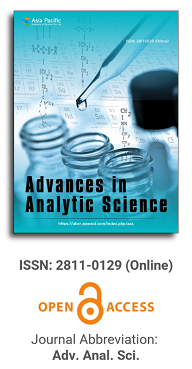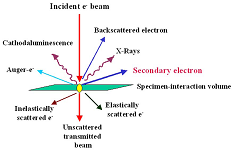
Asia Pacific Academy of Science Pte. Ltd. (APACSCI) specializes in international journal publishing. APACSCI adopts the open access publishing model and provides an important communication bridge for academic groups whose interest fields include engineering, technology, medicine, computer, mathematics, agriculture and forestry, and environment.

Comparative study on the determination of free formaldehyde residue in vaccines by pre-column derivative liquid chromatography and post-column derivatization liquid chromatography
Vol 4, Issue 2, 2023
Download PDF
Abstract
Objective: To develop and compare methods for quantifying residual free formaldehyde in vaccines using pre-column and post-column derivatization liquid chromatography, and to assess the consistency between these methods. Methods: For pre-column derivatization, we used a Shimadzu LC-20AT liquid chromatograph equipped with an SPD-20A UV detector. Separation was achieved with a mobile phase consisting of 60% acetonitrile at a flow rate of 0. 8 mL·min−1 and a column temperature of 40 ℃. Detection was performed at 360 nm using a Kromasil 100-5-C18 (250 mm × 4.6 mm) column. For post-column derivatization, we employed a Shimadzu LC-20AT liquid chromatograph with an SPD-M20A diode array detector and a vector derivative device. Separation was conducted with a mobile phase of 0.2% (V/V) phosphoric acid at a flow rate of 1.0 mL·min−1 and a column temperature of 25 ℃. Detection was carried out at 412 nm using a Chrom Core AQ-C18 (250 mm × 4.6 mm) column. The derivatization solution was acetate buffer, flowing at 0.5 mL·min−1 and maintained at 100 ℃. Both methods were evaluated for precision, repeatability, and sample recovery, with statistical significance assessed using F-test and t-test. Results: The pre-column derivatization method exhibited linearity over the range of 0.025–100 μg·mL−1 (R = 0.9999, n = 12). Precision showed an RSD value of 0.06%, and repeatability ranged from 0.3% to 1.4%. Average recoveries were between 97.3% and 104.8%, with RSD values from 0.7% to 2.9%. The limit of quantitation (LOQ) was 0.02 μg·mL−1, and the limit of detection (LOD) was 0.01 μg·mL−1. The post-column derivatization method demonstrated linearity in the same range (0.025–100 μg·mL−1, R = 0.9999, n = 12). Precision showed an RSD value of 0.02%, and repeatability ranged from 0.7% to 3.5%. Average recoveries were between 105.6% and 114.6%, with RSD values from 0.3% to 1.9%. The LOQ was 0.02 μg·mL−1, and the LOD was 0.006 μg·mL−1. Statistical analysis indicated that both methods produced comparable results. Conclusion: Both pre-column and post-column derivatization liquid chromatography methods are simple, accurate, and highly sensitive, making them suitable for determining residual free formaldehyde in vaccines.
Keywords
References
- Li JY, Zhang JY, Yang XM. Progress in research on commonly used inactivators of biological products. Chin J Biol. 2018; 31(9): 1040.
- Michiels TJM, Schöneich C, Hamzink MRJ, et al. Novel Formaldehyde-Induced Modifications of Lysine Residue Pairs in Peptides and Proteins: Identification and Relevance to Vaccine Development. Molecular Pharmaceutics. 2020; 17(11): 4375-4385. doi: 10.1021/acs.molpharmaceut.0c00851
- Tang XQ, Fang HR, Zhou CF, et al. A Novel Mechanism of Formaldehyde Neurotoxicity: Inhibition of Hydrogen Sulfide Generation by Promoting Overproduction of Nitric Oxide. Hetman M, ed. PLoS ONE. 2013; 8(1): e54829. doi: 10.1371/journal.pone.0054829
- Wang H xu, Li H cheng, Lv M qi, et al. Associations between occupation exposure to Formaldehyde and semen quality, a primary study. Scientific Reports. 2015; 5(1). doi: 10.1038/srep15874
- International Agency for Research on Cancer. Agents classified by the IARC monographs. International Agency for Research on Cancer Group; 2012.
- Chinese Pharmacopoeia Commission. Announcement on the improving of national drug standards in 2019. Chinese Pharmacopoeia Commission; 2019.
- Pharmacopoeia of the People’s Republic of China, 2020 Ed., Chinese Pharmacopoeia Commission; 2020.
- National Food and Drug Administration. Safety and Technical Standards for Cosmetics (2015 Edition). Beijing: People’s Standards Press of China; 2015. p. 413.
- National Food and Drug Administration. Announcement on the inclusion of 9 inspection methods including the detection method of free formaldehyde in cosmetics into the Cosmetics Safety Technical Specification (2015 Edition). National Food and Drug Administration; 2015.
- Xin JH, Qiu Y, Xue HQ, et al. Content determination of formaldehyde in bio-products using HPLC. J Microbiol. 2006; 26(5): 104.
Supporting Agencies
Copyright (c) 2023 Yukun Chen, Congcong Liu, Weiyang Liang

This work is licensed under a Creative Commons Attribution 4.0 International License.

This site is licensed under a Creative Commons Attribution 4.0 International License (CC BY 4.0).
1.jpg)
Prof. Sivanesan Subramanian
Anna University, India





.jpg)
